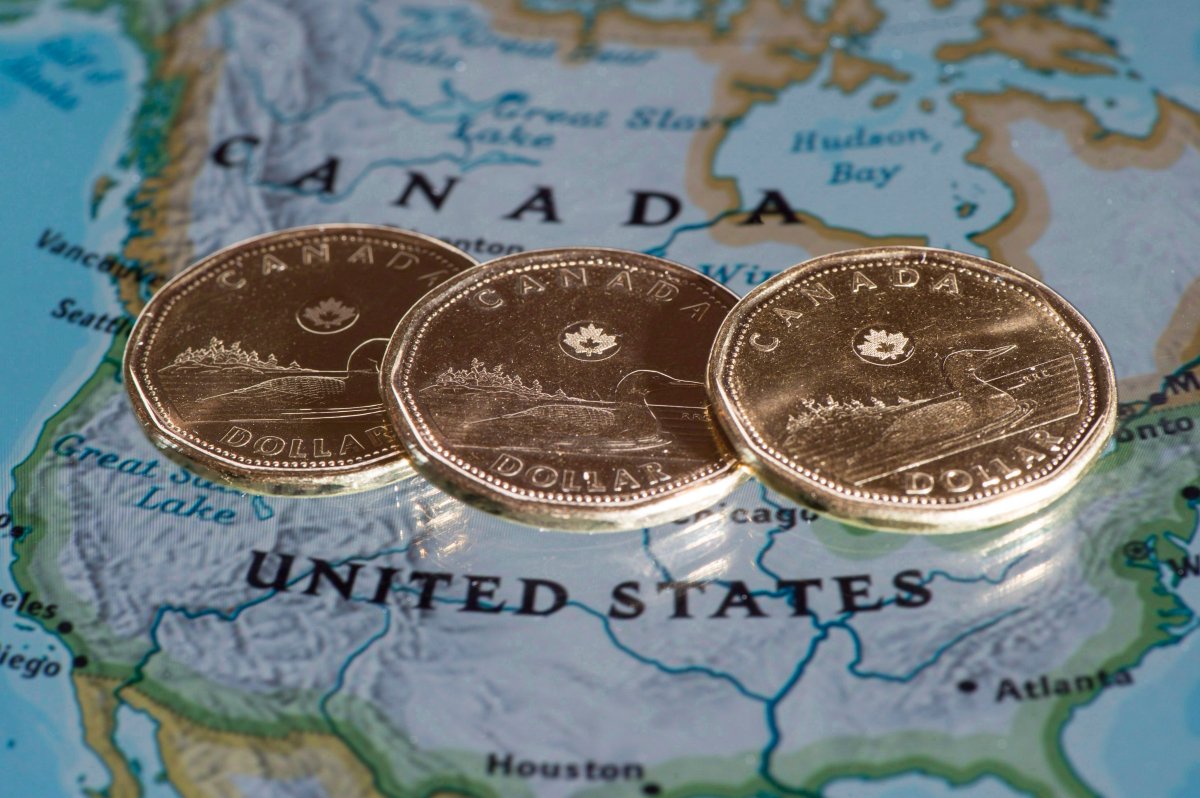One doesn’t need to be a currency analyst to know that, usually, when oil prices rise, so does the Canadian dollar.

Right now, though, Canadian consumers seem to be getting the short end of the stick on both ends. On the one hand, the price of oil is at a three-and-a-half year high — good news for the economy, but generally a bad omen for motorists — while on the other hand, the loonie keeps hovering around 0.75 U.S. cents, so lower than it was 12 months ago.
So what’s happening?
Other ‘oil currencies’ are also slumping
Canada is not alone, said Greg Anderson, global head of foreign exchange strategy at BMO. The currencies of other big oil exporters, like Russia and Norway, aren’t getting a big boost from the recent oil price gains, either.
In part, this is because markets seem to think the current trajectory of oil prices increase the chances of more interest rate hikes by the U.S. Federal Reserve, Anderson told Global News via telephone.
READ MORE: How China is preparing for a potential trade war with the U.S.
High oil prices tend to push up inflation, while higher interest rates do the opposite. Central banks generally tweak interest rates to keep inflation within a desirable, moderate rate that helps foster stable economic growth.
- Gas prices surge in some parts of Canada. What’s causing pain at the pumps?
- Ontario premier calls cost of gas ‘absolutely disgusting,’ raises price-gouging concerns
- Buzz kill? Gen Z less interested in coffee than older Canadians, survey shows
- More youth are seeking EI amid rising unemployment rates: StatCan
In the U.S., where a booming economy was already pushing up inflation, climbing oil prices make future rate hikes even more likely, the markets seem to be forecasting.
And higher interest rates usually boost a country’s currency value.
Of course, high oil prices tend to push up inflation in every country. But economies, like Canada’s and the European Union’s, are growing more slowly, so there’s less of a case for higher interest rates.
The Bank of Canada, for its part, is widely expected to raise rates one more time this year. But Canada’s economy has been slowing down, rather than accelerating, so there’s little pressure on the central bank to keep pushing up rates.
READ MORE: Trump’s tariffs and new mortgage rules to affect Bank of Canada interest rate, Stephen Poloz says
Canada is part of the reason why oil prices are spiking
To make things worse, even Canadian producers aren’t benefiting from the current oil price spike as much as they could, as Alberta’s giant Syncrude Canada’s oilsands facility struggles with production problems.
In fact, analysts have pointed to Canada’s crude supply woes as part of the reason for the price increase.
READ MORE: Alberta premier says Trump attacks show need for pipeline
This adds to recent concerns about a major decrease in the world’s oil supply after President Donald Trump threatened this week to impose sanctions on countries that import oil from Iran, one of the world’s major crude exporters.
WATCH: Trump suggests cancelled Iran deal has progressed Middle East Peace Plan

Still, the production shutdown at Syncrude is expected to free up pipeline space out of Western Canada and strengthen prices for Canadian heavy oil.
If the price of Western Canadian Select, a blend of oilsands bitumen and lighter oil, stays at or above US$50 a barrel for the next six months or so, “there’s cause for the Canadian dollar to do better,” Anderson said.
READ MORE: Syncrude outage expected to ease pipeline congestion, boost heavy oil prices
And then there’s the trade war
Worries about President Trump’s increasingly harsh stance on trade are also helping to prop up the U.S. dollar and harm other currencies, including Canada’s.
“Steel and aluminum tariffs proved to investors that the Trump administration wasn’t going to let Canada off the hook for perceived unfair trade practices,” reads a recent CIBC report. “The recent increase in verbal jabs across the 49th parallel show that Canada is now a focus of the administration’s ire regarding trade rather than just a bystander.”
Because the U.S. has a large trade deficit with the rest of the world, it would likely suffer less than more export-oriented economies like Canada if global trade flows dropped in a trade war, Anderson said.
WATCH: Trump says Canada won’t ‘take advantage’ of U.S. anymore

CIBC expects the Canadian dollar to weaken further to $0.74 U.S. cents by the end of the year. But things could get worse if Washington were to implement U.S. auto tariffs against Canada.
The flip side, Anderson said, is that the U.S. president “changes lanes very quickly.”
If he switched his mind about auto tariffs next week, the Canadian dollar would see an immediate benefit.
“You should see that as a two-way risk.”
With a file from the Canadian Press




Comments